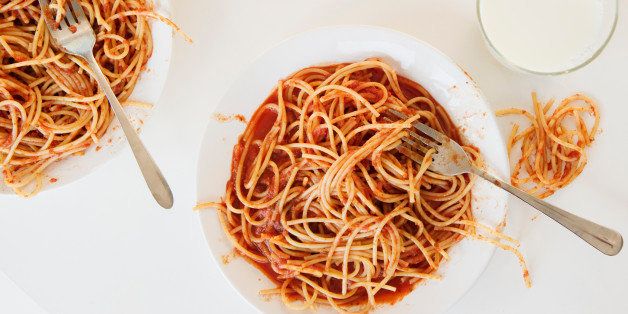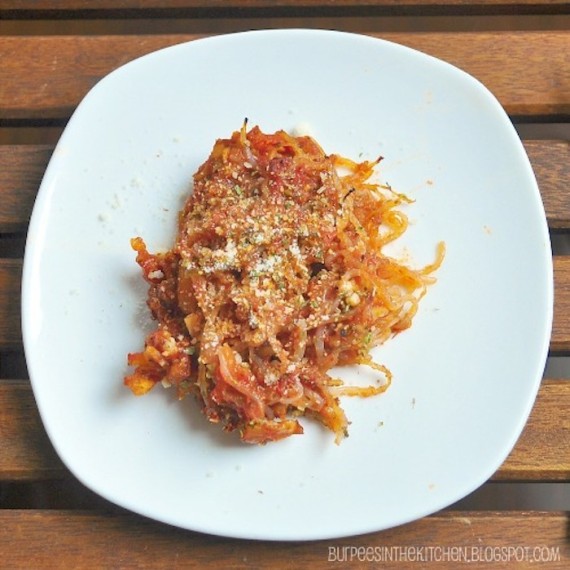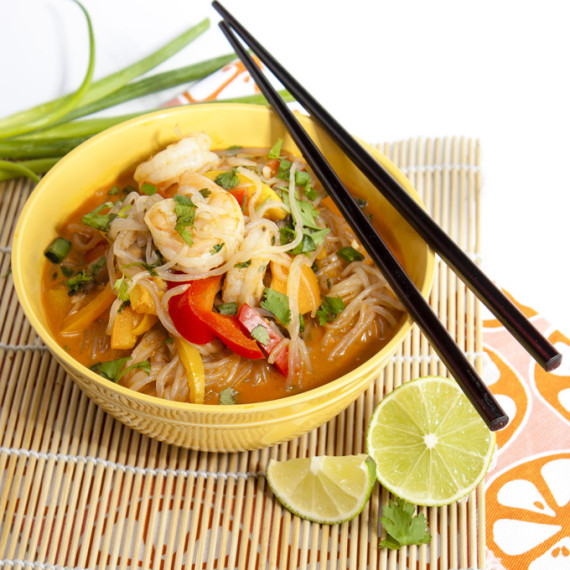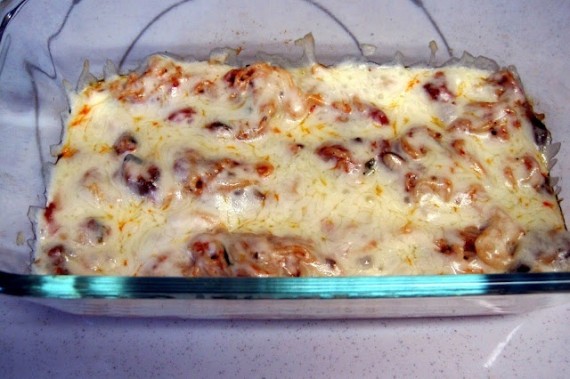
There's a reason shirataki noodles are branded as "Miracle Noodles." These translucent, gelatinous Japanese noodles, which are made from the konjac yam, are low in calories and carbohydrates and can be substituted in a variety of recipes that call for pasta.
If you're in search of carb-free noodles that perfectly mimic the taste and texture of regular spaghetti -- a true miracle -- keep looking. Like pasta, shirataki noodles are mostly neutral in flavor and can absorb the tastes you cook with. But, shirataki has a slimier consistency and you won't be able to choose the hardness of your pasta -- al dente or otherwise -- because the noodles are already "cooked."
And, very unlike generic, boxed spaghetti, shirataki noodles come pre-packaged in liquid, portioned out in a plastic bag that gets refrigerated. The noodles are watery and emanate a faint, fishy odor (though they're 100 percent vegan), which comes from the plant they are made from. Shirataki noodle manufacturers recommend rinsing, draining and drying the noodles before using them in dishes -- this'll help reduce the smell. Nevertheless, the pasta alternative is a smart choice for those looking for something gluten-free, low-carb or lighter in calories.
Shirataki noodles are available in many shapes -- spaghetti, fettucini, macaroni -- and can be purchased plain. Products like Miracle Noodle and NoOodle Noodles sell this type, which tends to be extra-slippery, nutritionally void (they are mostly made up of water) and close to calorie-free. Other brands, like House Foods and Nasoya's Pasta Zero blend the yam flour with tofu or chickpeas, which adds just a few calories and grams of carbohydrates and fiber.
A recent study published in the Annals of Internal Medicine found that a low-carb diet was more effective for losing weight and reducing cardiovascular risks than the low-fat diet, and shirataki noodles certainly earn a win from this nutritional angle. 
A 4-ounce serving of House Foods Tofu Shirataki Spaghetti contains 10 calories, .5 grams of fat, 3 grams of carbohydrates and less than 1 gram of protein. A 2-ounce serving (the weight is different because shiritaki noodles are already cooked) of Barilla Angel Hair pasta contains 200 calories, 1 gram of fat, 42 grams of carbohydrates and 7 grams of protein.
When it comes to price, however, classic spaghetti takes the cake. You can snag a box of Barilla at Target for $1.29, which comes out to about 16 cents per serving.
A bag of House Foods' costs about $3.00 on Amazon, which comes out to $1.50 per serving.
When cooking with shirataki, remember texture: It's more like the glass or cellophane noodles you find in Asian stir fries, soups and dumplings. So, if you're trying to recreate a meal without compromising familiarity, use shirataki for these sorts of recipes.
Even still, if you're willing to adjust your noodle expectations, shirataki can certainly work in more traditional Italian dishes. Try this Spaghetti-Esque recipe by Burpees In The Kitchen:
You might attempt your own rendition of this Marinara And Zucchini Spaghetti recipe by Feed Your Skull.
There's a lot you can do with a package of shirataki in your fridge. Flavor them with the seasoning packet that comes with a serving of ramen (and toss the dried noodles by the wayside). Or, add them to a can of your favorite soup for a bit more volume. Just use your noodle (heh), and you'll be sure to find something that tastes miraculous.




